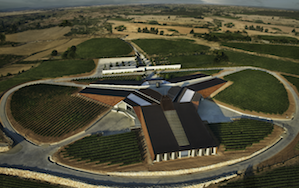Rioja’s value is particularly noticeable in the UK, where the Sin Crianza or Joven (meaning “young”) category – unoaked, unaged wines – accounts for 52% of sales, with Crianza at 16%, Reserva at 28% and Gran Reserva taking up 4% of the market.
For many bodegas, Sin Crianza is a cash cow, but others feel that it is cheapening the Rioja image. One export manager, Anne Vallejo of Marques de Caceres, is clear about this: “It can be damaging – we have to work at upgrading the image.”
Caceres, in common with bodegas across the region, is actively premiumising its range. While the top seller in almost all markets remains its Crianza, the bodega has recently introduced the Excellens range, five wines sourced from high-altitude vineyards with all the emphasis on vine age, reduced yields and limited production. “Rioja has an excellent value offering,” Vallejo says, “but that doesn’t necessarily give prestige.”
There are hidden drawbacks to the sort of success Rioja enjoys in world markets, and this is nowhere more apparent than in the movement to reform the DO. The catalyst was Juan-Carlos de Lacalle of the ultra-premium producer Artadi, who has decided that, from the 2014 vintage, all his wines will be declassified and become simply Vino de Mesa.
Tools for expression
“We need different tools to express the thousands of styles of Rioja,” he says. He wants to add a village classification to the toolbox (his single vineyard wines, Valdegines, La Poza and El Carretil, are labelled Laguardia, rooting them in their village), as does Telmo Rodriguez of Remelluri and Alvaro Palacios, whose family winery Palacios Remondo is in Alfaro, the eastern point of Rioja Baja.
Rodriguez’ argument is that the concentration on the age of the wine, with no notice taken of site, reduces the complexity of the appellation, which after all is known as “the land of 1,000 wines”. “We’re happy to be generic,” he says with regret.
For at least a decade, Rioja aficionados and professionals have readily understood the difference between ‘modern’ and ‘traditional’ wines. The latter, picked earlier, macerated with minimal skin contact, aged in American oak, are lighter, more Bordeaux-like – classic Rioja Tempranillo.
The former, popularised by pioneers such as Rodriguez, Artadi and Palacios, and ultra-premium modern bodegas such as Roda, put all the emphasis on the vineyard, producing single-vineyard wines and blends of complexity and finesse, introducing French oak and reducing ageing times, making wines that are sometimes criticised as being too ‘international’ in style, but which at their best give an indelible sense of terroir.
This has galvanised the independent end of the market. Traditional Rioja is still the mainstay of many importers (the Wine Society’s best sellers are “good traditional-style Rioja as epitomised by producers such as La Rioja Alta”, according to Spanish buyer Pierre Mansour) but importers who specialise in more artisanal wines from small producers are excited.
London-based Indigo Wines, for example, has just taken on Remelluri, the family bodega of the Rodriguez family and one of the pioneers of terroir Rioja. Buyer Alvaro Ribalta tells DI its interest in Rioja had been lukewarm at best. “Generally we have it because we have to have it and up to now we haven’t really been proud of the offering. Until Remelluri, that is. We’re really proud
of that.”




